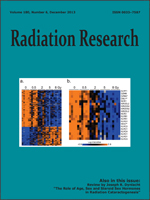It is critical to identify and gain a better understanding of the factors that enhance or reduce the risk of cataractogenesis, to minimize the possibility of occurrence after deliberate (e.g., radiation therapy, interplanetary travel) or unintentional exposure to ionizing radiation. Both gender and age at the time of exposure have been established as key determinants of cataractogenesis induced by sparsely ionizing (low-LET) and densely ionizing (high-LET) radiation. However, animal data from several older studies are often conflicting and somewhat difficult to interpret, in that the experiments suffered from small group sizes, limited dose ranges or short periods of observation, and human data are sparse or statistical significance is sometimes limited. Steroid sex hormones (SSH) may underlie age and gender-based differences in the progression and prevalence of cataracts that otherwise occur spontaneously in humans and animal models, and may also underlie age and sex-related differences in radiation cataractogenesis. Here, we review data that have aided in our understanding of the role of age, sex and steroid sex hormones in radiation cataractogenesis.
How to translate text using browser tools
1 December 2013
The Role of Age, Sex and Steroid Sex Hormones in Radiation Cataractogenesis
Joseph R. Dynlacht
ACCESS THE FULL ARTICLE

Radiation Research
Vol. 180 • No. 6
December 2013
Vol. 180 • No. 6
December 2013




